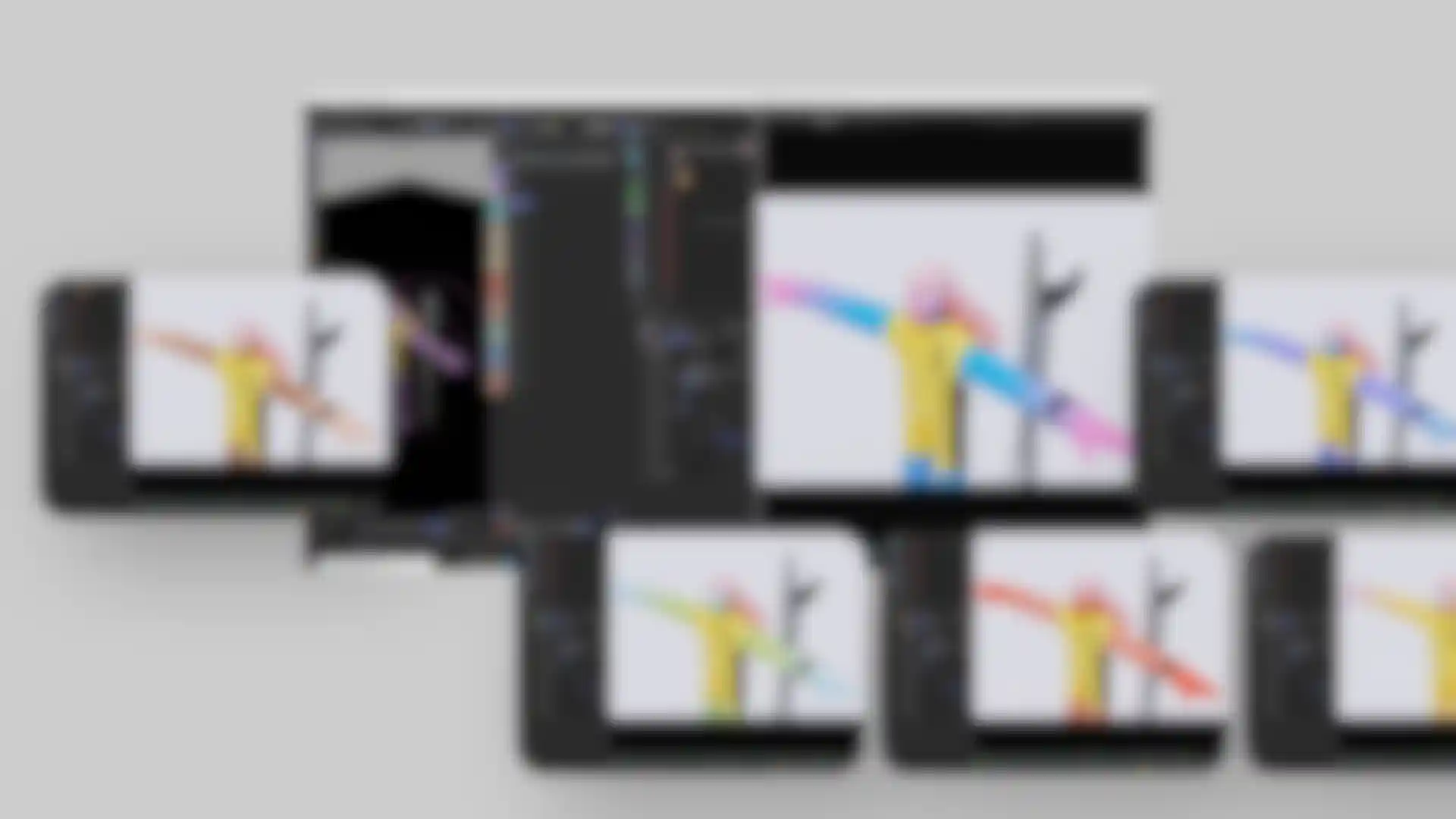
Aerial Explorers: 3D Virtual Heroes for Environmental Responsibility Aerial explains how they used Cinema 4D and Octane to help make climate action easy and fun for everyone.
Aerial is more than a blockchain sustainability company. Founded by Andreas Homer, Ari Sawyers and Ebby Amir, Aerial is on a mission to make it easy and fun for people to manage their carbon footprints across travel, blockchain and much more. “Our motto is ‘climate action for everyone," says Homer, explaining that Aerial’s app tracks emissions and gives people simple ways to take action.
We talked with Homer, CEO, and Aerial’s Lead Interactive Designer, Lionel Taurus, about their app and how they use Cinema 4D in their work, particularly their Aerial Explorers NFT series. Comprised of five thousand distinct Aerial Explorers, the series is all about “adventurous on-chain 3D heroes that inspire people to care for the planet.”
Explain a bit about Aerial and your app.
Homer: Tracking your carbon footprint and taking climate action should be as intuitive as counting calories or daily steps. In our quest to make that happen, design played a critical role. My co-founder, Ari, has a lot of experience bridging the gap between product design and the human elements of using software.
He has designed products for successful startups like Sunrise Calendar, which was acquired by Microsoft, and has also spent time as a product designer at Meta. Our other co-founder, Ebby, leads engineering and has helped develop and launch several brands and products during his time at Apple, Google and Casper. His expertise has helped us establish a strong link between our product and brand identity.
How does the Aerial Explorers initiative tie into Aerial itself?
Homer: We set out to make climate action something that everybody could do and discovered that the phrase ‘Offset with Aerial’ became ubiquitous in the blockchain community, from the biggest celebrities and brands to the most popular collections. People were eager to embrace sustainability by testing out ideas on being climate positive and taking an environmental stance in a digital metaverse.


It became mandatory to ship climate-positive blockchain products, which is why Aerial Explorers’ minting is automatically offset by our innovative technology. Our first partner was Calvin Harris, followed by Shakira, Ellen DeGeneres, David Lynch, Mr. Brainwash, Tinker Hatfield, and companies like Pepsi, TikTok, Levi's, Budweiser, ASICS, Universal Music Group, Etihad Airways and Campbell's.
As Aerial has been a major part of many notable brands' and celebrities' sustainability journeys into NFTs, we wanted to help usher in this exciting new era by launching a fully 3D NFT collection on Ethereum that inspires adventure, caring for our planet and expanding our world.

Our goal is to continue to show that the blockchain can be used for good. Every Explorer purchased permanently removes CO2 through an innovative carbon removal partner, and any emissions from the creation and sales of our collection are climate positive. As our mint was free, funding for carbon removal comes from secondary royalties. Aerial Explorers is a great way to spread our mission and grow our impact.
Walk us through the creation process for Aerial Explorers with Cinema 4D?
Taurus: When I started building Aerial Explorers, I wanted to develop a system to visualize an abstract version of their body type before starting any production. I used the Volume Builder in Cinema 4D to quickly create a visualization of the character and get different personas using only primitive shapes.
That allowed us to quickly choose a direction before modeling anything out in detail. One of the most useful features during that phase was C4D’s ZRemesher because even with something very rough, you can get very useful retopology results with the symmetry option.


After building a characters' body, I used Octane to build diverse skin shaders. I wanted something fast and flexible, and I was more proficient with that rendering pipeline. I played with very colorful tones to match Aerial's branding, but also built a wide range of realistic skin tones to make the project more relatable to our community and bring more diversity to our characters.
Once the characters were done, I created different backgrounds, clothes and objects to give them a look tied to their environment — desert, ocean, mountains, snow, beach and space. It was very laborious as the goal was to have the capability to randomly mix and match the clothes, and also overlap them. I tackled the problem by using different thicknesses in Cinema 4D’s Cloth, along with a layering system that I shared with the rest of the team to avoid any bugs.
What were some of the most challenging aspects of the project?
Homer: One of the most complicated challenges later in the project was finding a way to export all the assets with the proper naming of each object. We needed the engine to be able to pick and choose random assets by name to rebuild a bespoke collection of characters. So I built a custom Cinema 4D export system to get all the different items and body parts exported as separate PNG files, with proper naming using the camera name.

To simplify things, all the objects were inside a cloner rendering each object one after the other, frame after frame, automatically with XPresso. To get the proper naming, the objects were fed to a list spitting out the name of the current object to the main rendering camera. The last step was to get and update the name of each object at each frame to the file path using a camera. It was pretty difficult, but it worked!
Once everything was rendered, the last step for our developers was to create a unique collection of Explorers by reassembling the exported assets into thousands of random configurations.
How does Aerial plan to use Aerial Explorers in the Metaverse?
Homer: At the moment, we want to try to remove as much carbon from the atmosphere through Explorers. We have discussed innovative ways to use the blockchain to bridge the gap between the physical and virtual world of carbon credits, but we're still looking into the most sensible ways to approach that. If there is an appetite from our community to use their Explorers in various Metaverse environments, we will research that too.
“NFTs will likely play an increasingly important role in facilitating ownership, trade and commerce within the Metaverse.”– Andreas Homer
How do you see the use of NFTs evolving?
Homer: NFTs will likely play an increasingly important role in facilitating ownership, trade and commerce within the Metaverse. This includes things like virtual land and asset ownership, identity authentication, event ticketing and art ownership. There are definitely a bunch of other use cases that have not yet been dreamed up. We're excited to see what the future holds!